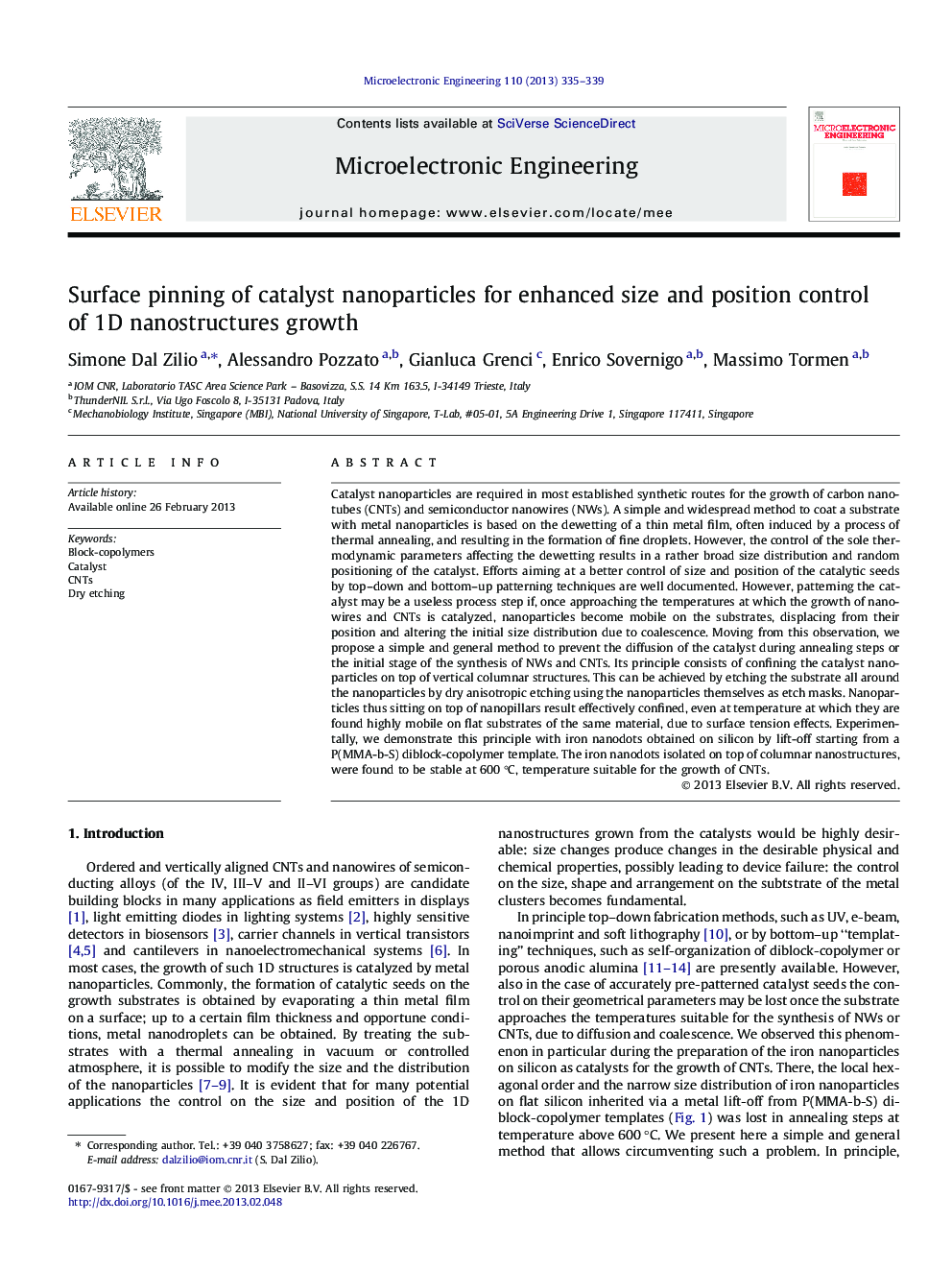| Article ID | Journal | Published Year | Pages | File Type |
|---|---|---|---|---|
| 544289 | Microelectronic Engineering | 2013 | 5 Pages |
Catalyst nanoparticles are required in most established synthetic routes for the growth of carbon nanotubes (CNTs) and semiconductor nanowires (NWs). A simple and widespread method to coat a substrate with metal nanoparticles is based on the dewetting of a thin metal film, often induced by a process of thermal annealing, and resulting in the formation of fine droplets. However, the control of the sole thermodynamic parameters affecting the dewetting results in a rather broad size distribution and random positioning of the catalyst. Efforts aiming at a better control of size and position of the catalytic seeds by top–down and bottom–up patterning techniques are well documented. However, patterning the catalyst may be a useless process step if, once approaching the temperatures at which the growth of nanowires and CNTs is catalyzed, nanoparticles become mobile on the substrates, displacing from their position and altering the initial size distribution due to coalescence. Moving from this observation, we propose a simple and general method to prevent the diffusion of the catalyst during annealing steps or the initial stage of the synthesis of NWs and CNTs. Its principle consists of confining the catalyst nanoparticles on top of vertical columnar structures. This can be achieved by etching the substrate all around the nanoparticles by dry anisotropic etching using the nanoparticles themselves as etch masks. Nanoparticles thus sitting on top of nanopillars result effectively confined, even at temperature at which they are found highly mobile on flat substrates of the same material, due to surface tension effects. Experimentally, we demonstrate this principle with iron nanodots obtained on silicon by lift-off starting from a P(MMA-b-S) diblock-copolymer template. The iron nanodots isolated on top of columnar nanostructures, were found to be stable at 600 °C, temperature suitable for the growth of CNTs.
Graphical abstractFigure optionsDownload full-size imageDownload as PowerPoint slideHighlights► In nanowires growth, a fundamental key is uniformity of catalyst particles. ► Block-copolymers lithography can generate large area patterns of nanostructures. ► At the high temperature required for annealing nanodots coalesce in bigger clusters. ► The metal nanodots can be confined in delimited areas as effect of surface tension. ► Si nanopillars produced by dry etching were effectively used for the aim.
